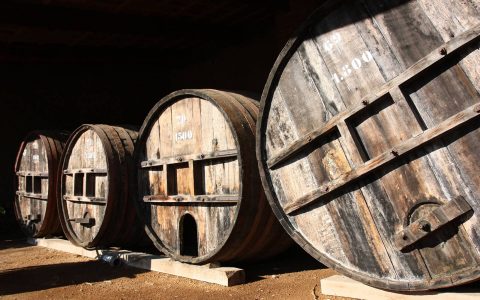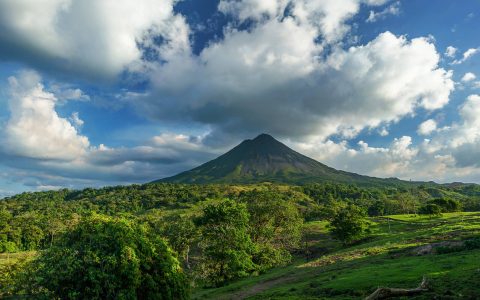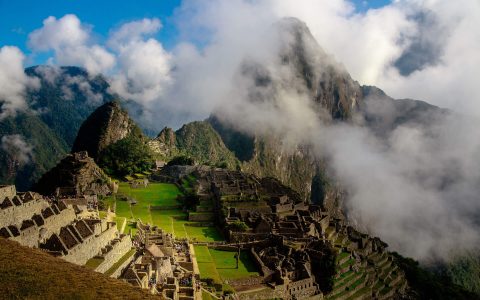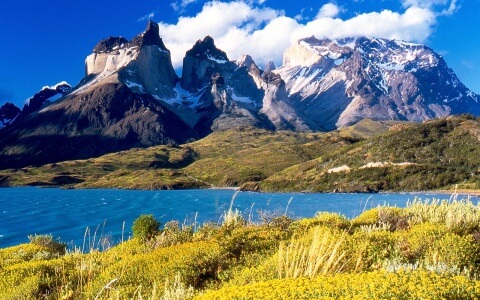Lakes & Volcanoes: A New Way to See The Andes
 Argentina and Chile share a different side of the Andes—especially in the lakes (and volcanoes!) region. My recent memories from being here are simply the joy of connecting with nature and exploring the landscapes—especially when you get to the lakes, with the possibility of kayaking, lazy-river rafting, and even fishing.
Argentina and Chile share a different side of the Andes—especially in the lakes (and volcanoes!) region. My recent memories from being here are simply the joy of connecting with nature and exploring the landscapes—especially when you get to the lakes, with the possibility of kayaking, lazy-river rafting, and even fishing.
Another favourite: the truly warm, authentic local hospitality—it seems that everyone’s doors are open. (It especially helps when you are welcomed to share a Patagonian roast lamb with chimichurri sauce and a local craft beer!) I’ve always experienced a genuine desire and enthusiasm from locals to share their culture with visitors on my many visits.
There’s also something special about being in a different part of Patagonia; never mind the imaginary ‘border’ of Chile and Argentina—Patagonians, by nature of living in one of the remotest regions on earth, define themselves not by country but by dint of living in this incredible region. Here are some important things to know about this part of the world.

The Andes Mountains
The longest continental mountain range in the world, the mighty Andes are 7,000 kilometres (4,300 miles long), spanning seven countries: Venezuela, Colombia, Ecuador, Peru, Bolivia, Chile and Argentina. These mountains form the ridge that traces the western contours of South America. The world’s highest mountain range outside of Asia, the highest elevation is at Mont Aconcagua in Argentina, at 6,961 metres (22,838 feet) above sea level. The fauna number 3,500 species, with two-thirds of them endemic to the mountain range. There are nearly 600 species of mammals, over 1,700 species of birds, over 600 species of reptiles, and nearly 400 species of fish.

Villarrica Volcano
On the Chilean side of the border, this spectacular active volcano sits on the shore of Villarrica Lake (and the town of Villarrica, along with a national park) but close to the town of Pucón, Argentina, this is one of Chile’s most active volcanoes, also known to the Mapuches as Rucapillán, the ‘devil’s house’. You will see its snow-covered cone, likely with plumes of smoke and steam rising from its top. There is an intermittent lava lake found at its centre. It recently erupted in 2015, causing evacuations. One popular activity is climbing the volcano, which depends on the ever-changing weather conditions. The trek takes about 3-5 hours, where one dons crampons and snow gear, and on the way back down from the summit, you can toboggan all the way down!

Bariloche
 The largest city in the region, with a population of just over 100,000, Bariloche (the full name of the town: San Carlos de Bariloche) is nestled between the southern shores of Nahuel Huapi Lake and the foothills of the Andes. South America’s largest ski resort is located here, with skiing, trekking, mountaineering, and other outdoor pursuits to be had. If you look around, you may be surprised to see Alpine architecture, a nod to the region’s European heritage, as many German immigrants settled here in the late 1800s from Germany, Austria, Slovenia and more—hence the many chocolate shops and fondue establishments!
The largest city in the region, with a population of just over 100,000, Bariloche (the full name of the town: San Carlos de Bariloche) is nestled between the southern shores of Nahuel Huapi Lake and the foothills of the Andes. South America’s largest ski resort is located here, with skiing, trekking, mountaineering, and other outdoor pursuits to be had. If you look around, you may be surprised to see Alpine architecture, a nod to the region’s European heritage, as many German immigrants settled here in the late 1800s from Germany, Austria, Slovenia and more—hence the many chocolate shops and fondue establishments!
A curious footnote to all this is that in the waning days of the Second World War, then-president Juan Peron’s ties with Germany meant that a number of former Nazis ended up living in Bariloche (including Josef Mengele, who spent some time in Bariloche before heading to Brazil, and SS commander Erich Priebke, who lived here for fifty years and was later extradited to Italy in the mid-1990s after being discovered).

Discover A New Side of the Andes
On our Lakes & Volcanoes Active Expedition, explore the serene Lakes Region of Argentina, the Alpine feel of Bariloche, the warmth of the Mapuche culture as you paddle, trek, and hike your way through to the volcanoes of Chile.
DETAILED ITINERARYThe Mapuche People
The Mapuche indigenous people have been around since at least 600 years BCE, and are the most numerous first peoples in South America, at more than 1.5 million people. Most Mapuche live in south-central Chile, southwestern Argentina and parts of present-day Patagonia. There was conflict as the Spanish conquistadors arrived in the 16th through to the 18th centuries, with much resistance from the Mapuche. As the Spanish gave way to Chilean independence, the Mapuche were moved to reservations and their traditional lands used for agriculture, with some land disputes continuing to this day.
A collection of various groups of people linked by their common language, Mapudungun, Mapuche means ‘the people of the earth’. Truly connected to the land, much of the culture features healing ceremonies and the use of traditional herbal medicine. There are traditions of the Mapuche shaman, the machi (usually female), who perform ceremonies to heal and ward off enemies or evil. There is also a rich tradition of textile-making (woven blankets or ponchos) that is passed down from one generation to the next, along with silverwork due to trade with Spaniards and Chileans.

Nahuel Huapi National Park
The oldest national park in Argentina, established in 1934, it’s also one of the largest in the region, encompassing several ecozones in the foothills of the Andes and Nahuel Huapi Lake. The altitude of the park rises up to 3,574 metres (11,726 feet) and spans nearly 2 million acres of land. From white-topped peaks that feature year-round snow, this is the perfect place to explore the lakes, rivers, waterfalls, glaciers and deep forests of the Andes; on its western side, the Chilean border trims it.

Nahuel Huapi Lake
Located in the lake region of northern Patagonia and within the Nahuel Huapi National Park, this vast glacial lake takes its name from the Mapuche language, meaning “Island of the Jaguar”. A Jesuit mission was established here from 1670-1673, and another one in 1703, destroyed in 1717 due to a local dispute. There are seven branches in this lake, along with two islands: Isla Victoria and Isla Huemul. The lake is stocked with non-native fish (rainbow, brown and brook trout) ideal for recreational fishing, along with other outdoor activities like kayaking. According to legend, there is a giant cryptid living in the lake, called ‘Nahuelito’, and its sightings reportedly predate Nessie. In nearby Chile, the Puyehue-Cordón volcano complex (of four volcanoes) erupted in the year 2011, blanketing the lake’s surface in volcanic ash for a brief time.

Yerba Mate and tea culture in Argentina
 The national drink of Argentina, the highly caffeinated herbal tea, yerba mate, is derived from the ground leaves of the plant ilex paraguariensis, actually a member of the holly family. Rich in caffeine as well as antioxidants, cholesterol-lowering properties and the vitamins B1, B2 and C, it is considered a healthy drink with medicinal properties by indigenous South Americans.
The national drink of Argentina, the highly caffeinated herbal tea, yerba mate, is derived from the ground leaves of the plant ilex paraguariensis, actually a member of the holly family. Rich in caffeine as well as antioxidants, cholesterol-lowering properties and the vitamins B1, B2 and C, it is considered a healthy drink with medicinal properties by indigenous South Americans.
First cultivated and consumed by the indigenous Guarani people in Southern Brazil, the drink spread with European colonization, with Jesuits first successfully cultivating it commercially (although they tried to ban it in Argentina at first). Traditionally served loose-leaf in a hollow gourd and drunk through a perforated metal straw called a bombilla, the serving style is to pass the gourd to each person, drinking it communally; it is refilled continuously and shared. Being highly caffeinated, it is often drunk as a morning beverage. You’ll also find a variation of yerba mate called mate cocido, which is brewed from a tea bag and served with milk and sugar.
In Buenos Aires and in the Welsh regions of Patagonia, a fascinating mash-up of British and Argentine tea culture has sprung up with tea sandwiches and a late afternoon ritual, following the British tradition.
Where to Stay
Llao Llao Resort, Bariloche
The most exclusive resort in Argentine Patagonia, Llao Llao boasts breathtaking views of the surrounding lakes, forests, and the soaring Andes mountains. A magnificent indoor and outdoor pool, 18 holes of golf, and an amazing spa are just some of the amenities on offer at this grand hideaway.

Las Balsas Hotel
The prestige of this Relais & Chateaux property set amidst the breathtaking Patagonian landscape is an opportunity to encounter Argentina at its natural best. Las Balsas is a haven for those who seek the serenity of wide open spaces, whether finding refuge in the hotel’s spa or pursuing a more active agenda in the surrounding countryside.

Hotel Vira Vira
Set in a marvellous park and surrounded by stunning volcanoes, Vira Vira sits proudly on the shores of the peaceful Liucura River. Its gourmet restaurant uses wonderfully fresh produce from the property’s farm to design the daily menu. The cozy fireplace is the perfect spot to curl up with a glass of Chilean Carmenère in the evenings.

MORE FROM Latin America + Argentina

Reading for the Road: The Best Books About Colombia
Colombia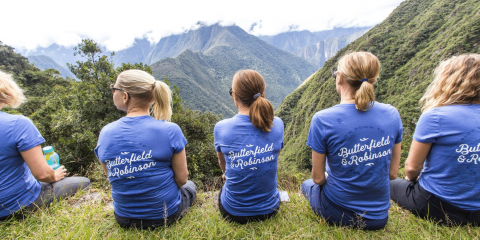
A Wellness Escape to Peru with Butterfield & Robinson
Peru
Cruising Through Argentina’s Famous Seven Lakes Road
Argentina
The Slow Fund: Scholarship Fund with Kuska School
Peru
A Taste of South America at Home: Argentinian Beef Empanadas
Argentina
Bespoke Stories: An Off-the-Grid Adventure for a Father & Son in Peru
Peru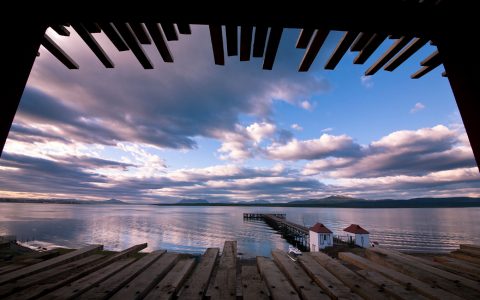
Spectacular Stays: The Singular Patagonia
Chile
7 Reasons Why You Need to Visit Panama City
Panama
Beyond Buenos Aires: Exploring Northern Argentina
Argentina
South America’s Best-Kept Secret: Uruguay
Uruguay
Off the Beaten Trail in Peru
Peru

